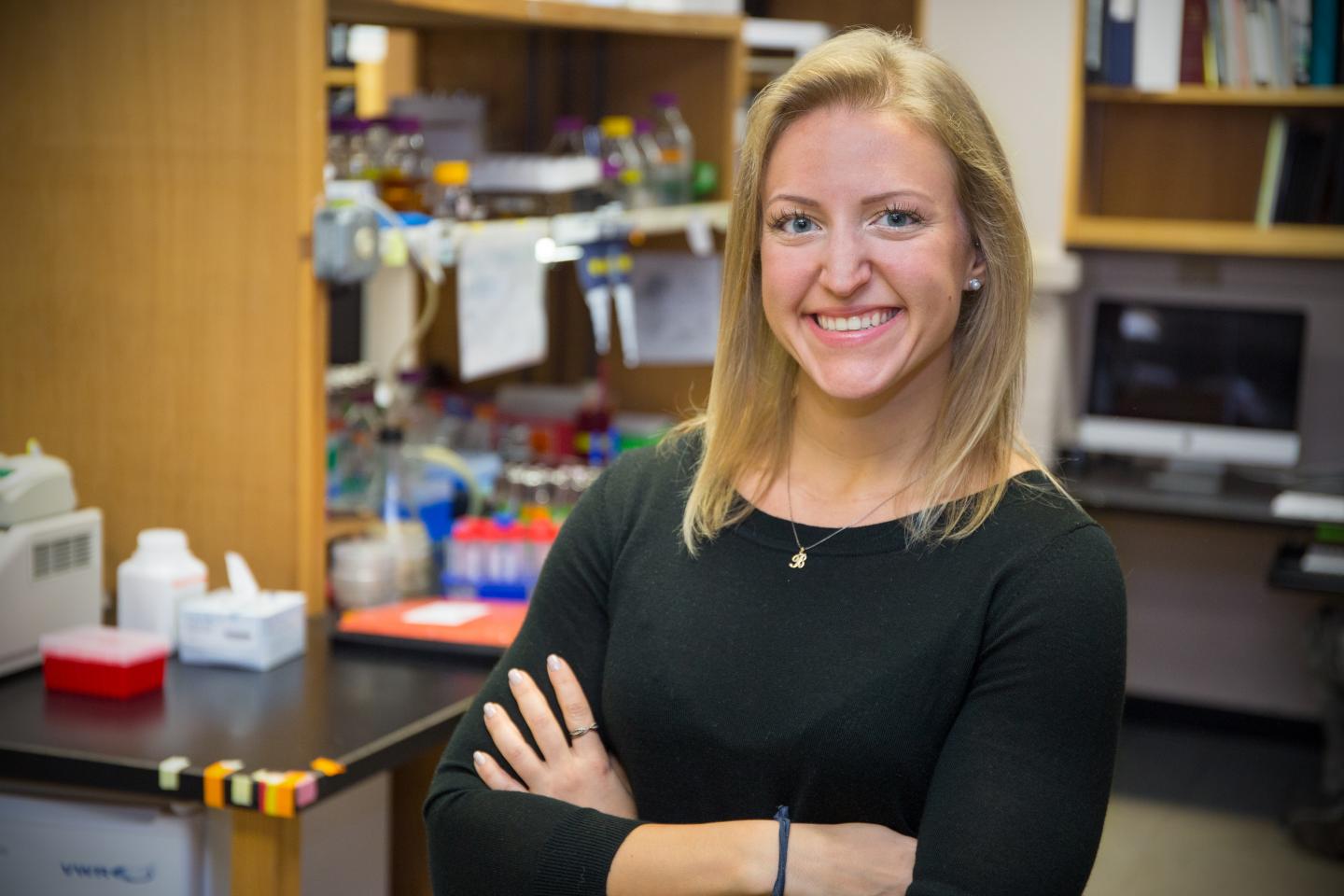Findings may lead to better understanding of muscular dystrophy, other diseases

Credit: Bill Lax/FSU Photography Services
TALLAHASSEE, Fla. — The nucleus is a treasure trove of biological information that keeps the cell — and thus living organisms — ticking. But many processes within the nucleus remain a mystery to scientists.
A Florida State University research team has uncovered one such mystery — how a type of protein that is embedded in the inner nuclear membrane clears out of the system once it has served its purpose. Understanding that process may have implications for a class of human diseases including muscular dystrophy.
FSU graduate student Bailey Koch, working in the lab of Associate Professor of Biological Science Hong-Guo Yu, led the work.
“This research is like a puzzle,” said Koch, who also worked for Yu as an undergraduate. “This study is a small piece, but it’s a piece that we and others can build on going forward.”
Koch and Yu examined the build-up of proteins around the nuclear membrane. These proteins are vital to a number of biological functions, but researchers were searching for clues about how old proteins were cleared out once they ceased to function.
The answer is published in the Journal of Cell Biology. Koch and Yu found that a type of enzyme that typically regulates cell cycle progression is responsible for the breakdown of the protein Mps3, an integral inner nuclear membrane protein that is an essential component linking the nucleoskeleton to the cytoskeleton.
Koch, who presented the research at the American Society of Cell Biology/European Molecular Biology Organization 2018 meeting, compares the cell to a park with the nucleus being the swimming pool and people serving as the proteins. When too many people crowd around the pool, it is difficult for parents to see their children, she said, so there needs to be a way to clear the non-parents from the side of the pool.
The enzyme is the lifeguard that clears proteins away.
Yu and Koch’s work is the first to shed light on this protein turnover pathway. They ran their experiments in yeast, a good model organism that often mimics human cellular processes, and conducted sophisticated genetic and biochemical analyses of their samples.
The protein the researchers studied is essential to cellular processes, such as cell-cycle progression, and also plays a role in a class of diseases that includes muscular dystrophy and a premature aging syndrome called progeria. Obtaining a better understand of how the protein is regulated could open doors to further understanding of how these diseases work.
“Many diseases associated with the nuclear membrane are due to protein issues,” Yu said. “That’s why there is so much of a focus on how they work.”
###
Assistant Professor of Biomedical Sciences Robert Tomko contributed to this study. This work is funded by the National Institutes of Health.
Media Contact
Kathleen Haughney
[email protected]
Related Journal Article
http://dx.




